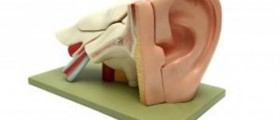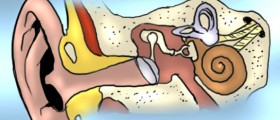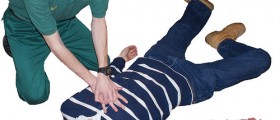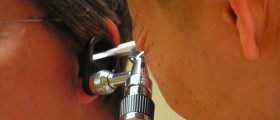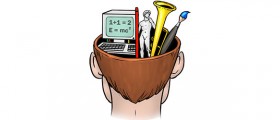Loading...
Loading...
Loading...
Loading...
Loading...
Loading...
~~Dante~~
***this post is edited by moderator *** *** web addresses not allowed***
Loading...
Loading...
There is a speech pathologist by the name of Dr. Morton Cooper that specializes in relaxing these muscles in speech usage by speech therapy. I believe he is getting ready to retire, but he has a book out with some information in it.
Along the speech pathologist route, if you look up circumlaryngeal massage (also know as Aronson Technique), that specifically targets many of the muscles in the laryngeal area, including the suprahyoids. Although it's intended primarily for singers and those with voice disorders, I believe it can be beneficial for all of you. The myofascial massage for the suprahyoids, including the digastric muscle, is a great complement to this.
Just know that you guys are not alone out there and you are not crazy. Doctors and specialists can only address what they are able to perceive and understand. It just takes a different way of thinking to solve our problems. With some creativity, inspiration, and a little bit of faith, you can solve anything.
~~Dante~~
Loading...
The styloid process is incredibly complex, in terms of its muscular attachments. It has attachments to the ear, the tongue, the hyoid bone, the back of the thyroid cartilage, the pharyngeal constrictors, and probably a few other things which I am not aware of. It is easy for an imbalance here to cause a myriad of problems.
1. On Wikipedia, type in "Temporal Styloid Process". The second picture off to the right should have the caption "External and middle ear, opened from the front. Right side. (Label for styloid process is bottom center.)" Blow up that picture and you can clearly see how the styloid process connects into the ear, so anything pulling on the styloid process will cause ear issues too, possibly a feeling of fullness in the ear, or in the case with me, that the eustachian tube won't completely clear.
2. On the same "Temporal Styloid Process" page, under additional images, click on the third image with the caption "Articulation of the mandible. Medial aspect." Here you can see how the stylo-mandibular ligament attaches the styloid process and the jaw, so this can also cause problems with the jaw too.
3. On the same page, under additional images, click on the fifth picture with the caption "Extrinsic muscles of the tongue. Left side." In this picture you can see several of the muscles which attach to the styloid process, including the stylohyoid, stylopharyngeus, and the styloglossus. The stylohyoid connects the styloid process to the hyoid bone. Typically the hyoid bone comes up when we swallow, partially by use of this muscle; however, if it is chronically tense, this is where swallowing problems come from. The styloglossus connects down into the back portion of the tongue, so if you go to stick out your tongue or off to the side and get irritation, this is probably the source of it. The stylopharyngeus connect into the back side of the larynx (specifically the thyroid cartilage). If this muscle overcontracts, it can cause voice problems and symptoms that might manifest themselves as a vocal fatigue or an inability to speak up without straining.
4. On Wikipedia, type in "Middle Pharyngeal Constrictor Muscle". Click on the main picture off to the right with the caption "Muscles of the pharynx and cheek. (Constrictor pharyngis medius labeled at center left.)" Although it is not totally clear from this picture, some fibers of the middle pharyngeal constrictor go into the stylohyoid ligament. This once again can cause problems when swallowing, especially with tightness in the very back portions/back wall of the throat (since this muscle is used to propel the bolus of food down the throat) and with the connections to the hyoid bone which raises when we swallow.
I hope this becomes clear to anyone that is confused why this pattern of pain or irritation can at first appear seemingly bizarre. Now, exactly how one ends up with irritation or overcontraction of the muscles to the styloid process just on one side, I don't know. Mine personally is from a slight scoliosis of spine, which causes everything to be slightly off center and some muscles to pull more than others. I am using Rolfing to address this issue. Like another person in this thread, I also had general neck tension on the same side as the discomfort in my throat. This was a big clue to me that there was a structural imbalance (which actually goes all the way down to my pelvis and legs). If you also feel general tension only on one side of the body, especially the neck area, you definitely want to look into structural imbalances as the source. As for the rest of you out there, you will have to do some more research into your personal situation, but I hope this points you in the right direction.
Keep the faith.
~~Dante~~
Loading...
If you have any questions about anything, feel free to look me up by name or via my web site. Just do a Google for Vocal Liberation and it should come up.
~~Marnell Dante Sample~~
Loading...
Thank you Dante. It's like seeing the light (not the one at the end of the tunnel ;-) ) I hold a Facilitator(just because I can't officially call myself a teacher)job where I speak to a crowd and without microphone plays a big part, plus I just remember how during choir class in school, the teacher would make us "warm up" by "vocalizing"
Loading...
Loading...
You guys may have Ramsay Hunt Syndrome, Look it up. Reply if this diagnosis helped.
Loading...




